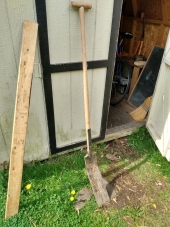




 )
)

 1
1




Sustainable Plantations and Agroforestry in Costa Rica




"You must be the change you want to see in the world." "First they ignore you, then they laugh at you, then they fight you, then you win." --Mahatma Gandhi
"Preach the Gospel always, and if necessary, use words." --Francis of Assisi.
"Family farms work when the whole family works the farm." -- Adam Klaus




Fred Morgan wrote:Not sure if you can do it, but mulch is a great sod breaker, i.e. just pile organic material on top, and the sod goes away - turns into food for the plants. You might try contacting those who do the pruning of trees in the area, they often will delivery it for free - since they don't have to pay you for dumping.

R Scott wrote:
That is what a plow was made to do. If your soil conditions are just right a spring harrow will do the job. But probably will need disking or something else as well. I don't like turning soil over, but once isn't too hard on biology (doing year over year is).
What is the goal for the ground?
 1
1









 4
4








 1
1









List of Bryant RedHawk's Epic Soil Series Threads We love visitors, that's why we live in a secluded cabin deep in the woods. "Buzzard's Roost (Asnikiye Heca) Farm." Promoting permaculture to save our planet.
 4
4




Zone 3b, Lower St. Lawrence, Quebec




 1
1








 1
1









|
catch it before it slithers away! Oh wait, it's a tiny ad:
The new kickstarter is now live!
https://www.kickstarter.com/projects/paulwheaton/garden-cards
|









